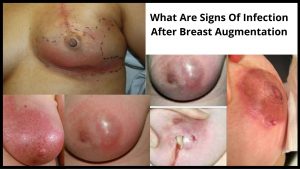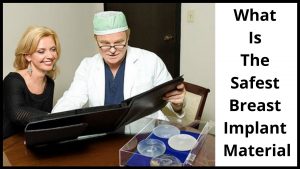
Do not let the surgeons’ perception of the death rate deter you from considering getting breast augmentation surgery, at least if you have a reasonable expectation of needing the surgery.
When it comes to this issue, always remember that the plastic surgeon is someone who is highly educated in terms of the dangers of these procedures.
If the surgeon has experience in performing breast augmentation procedures in his or her practice then it is his or her opinion as to whether or not the risks are manageable and whether or not they outweigh the benefits of the procedure.
While you are working with a surgeon who has the knowledge and experience to be able to advise you appropriately, you also need to find someone whose philosophy on the topic of these potential problems is similar in nature to your own.
For example, if you are planning on having cosmetic surgery on the side or back due to arthritis, then a different surgeon than the one that performs procedures for individuals with cancer would be the person to contact.
Another area where you should be cautious about the information that you find out about the breast augmentation death rates is the fact that many of them have been published by the American Society of Plastic Surgeons.
Breast Augmentation Death Rate – Facts & Truth You Must Know!
ASPS is an organization that is designed to keep the public informed about these issues.
The only real problem with these organizations is that some of them publish their findings only after the fact.
You may not always be able to determine what was actually reported, but you will be able to find out what is known by the public by knowing who was responsible for the death.
Many people assume that these organizations are only there to promote cosmetic surgery and may not take any real interest in the overall safety of the procedures that they report about.
This is simply not true.
Instead, these organizations work on behalf of the patients that use their services, in order to ensure that the best practices of cosmetic surgery are being used and that individuals are staying healthy after the procedures are performed.
As you are probably aware, there are certain things that need to be in place before cosmetic surgery can take place.
These things include the appropriate licensing of the surgeon that is performing the procedure, proper sterilization of the surgical instruments and the equipment, the proper documentation and billing procedures for the procedure, and the doctor who will be handling any follow up care after the procedure is completed.
Also, these things are the only way to ensure that all of the requirements are met, which means that the risks associated with these procedures will be minimal.
The bottom line is that you do not have to worry too much about death after cosmetic surgery.
But you must understand that when you are considering getting the procedure done, you should not take the risks without question.
Do some research before getting this procedure.
Your insurance may cover some of it, and you may qualify for a discount.
Find out exactly what you need for the price you can afford.
If your insurance does, they can help you get a good deal.
And if you do not have insurance, then you will have to shop around on your own to find something that works well.
Sometimes you can always get a good deal.
You may have to be concerned about the safety of this implant if you have any allergies, such as asthma, or any other disease that can affect the quality of your implant.
Before getting this procedure done, find out if you are a good candidate.
If you have had problems with your implants in the past, make sure that you did not have the problem again before you get this surgery.
As the last thing you want is a leaky implant.
It is important for you to fully understand the risks involved and if possible ask to see the records of the people who have had the procedure done before.
If you are a new patient looking to get cosmetic surgery, do not be afraid to speak with other people that have had the procedure to find out how they felt prior to the procedure and whether or not they felt comfortable with the procedure.

What Are The Chances Of Dying During Breast Augmentation?
There has been a lot of advancement in breast augmentation procedures.
And that makes deaths during the breast-augmentation procedure to be very rare likewise its complications.
But the risks involved with breast augmentation are more than just a cosmetic issue, they are also a safety concern and should be addressed before surgery is undertaken.
Not only are complications common but so is a surgery that is not done correctly.
Before any woman has a mammoplasty, she needs to know what the possible complications are and if they will interfere with her daily activities and well being in the future.
Here are some of the complications to note:
1. One of the most common potential dangers is blood clots.
2. Another common complication is infection.
3. Other risk factors include infection and injury.
4. Tumor in the breasts.
5. Fat stored below the breast.
6. Condition of the skin can change.
7. Infection or Anesthesia.
1. One of the most common potential dangers is blood clots.
This is usually caused by an increase in pressure around the breast and can cause a blood clot in the breast.
A breast augmentation can be dangerous because a blood clot could occur anywhere from three months to four years after surgery.
It can block the arteries that carry blood to the nipple or at the base of the breast.
2. Another common complication is infection.
This is most common among women who have had a previous infection or who have received antibiotics.
Women who have taken antibiotics for some time should consider a mammoplasty to prevent recurring infections.
3. Other risk factors include infection and injury.
Women who have had breast cancer or have had injuries or surgery on the breasts may experience side effects such as infection or injury.
The same applies to women who have had hernias, cysts, or lumps removed.
Any of these may result in damage to the breast tissue or to the underlying anatomy.
4. Tumor in the breasts.
If a tumor is found in the breasts, it may be cancerous or it may contain large tumors that could be life-threatening.
In order to determine whether the patient is at risk, medical specialists will typically perform a physical examination and an MRI scan.
If an individual’s health history and other conditions suggest that he or she is at risk of developing cancer, he or she will be advised to go through a mammoplasty as soon as possible.
5. Fat stored below the breast.
Another factor to take into account when considering what are the chances of dying during breast augmentation is the amount of fat stored below the breast.
Losing too much weight will make a breast appear smaller and reduce the breast’s appearance.
This can lead to sagging breasts, which will make a woman appear older than her real age.
When a woman takes the time and money to lose weight, she may not be aware of the potential risks associated with taking part in her breast’s weight with her to achieve the desired result.
6. Condition of the skin can change.
The condition of the skin can change and there may be sagging of the skin that allows the fat to leak through the skin and onto the skin surrounding the nipples.
This is not uncommon and it is possible to have small patches of skin on the nipple that is unsightly.
7. Infection or Anesthesia.
Risks also include infection or anesthesia.
These can occur from being cut or infected while the skin is being removed.
If there is an open wound, bleeding may occur during the procedure.
There may also be a possibility of nerve damage or scarring during surgery.
Even though some risks may seem small, it is still best to consider the options before having surgery, even though the risks may seem insignificant.
If these are risks you are concerned about, it is best to get professional advice.
The first step in deciding what the chances of dying during breast augmentation are for you is to know the extent of the risks.
While it may seem like an extreme concern, many women who undergo breast enlargement surgery often have a death fear.
They may worry about how they would pay their bills if they should pass away suddenly.
Many women do not think that this is a big deal, but it may be especially true if the surgery leaves them with one major problem.
Although there are many risks associated with breast augmentation, there is a good chance that a person will survive the procedure.
Just make sure to do your research before getting the procedure.
The procedure may not be appropriate for everyone.
If you are not sure whether you can safely go through the procedures, you should talk with a surgeon who will evaluate your medical history and tell you if there are any medical conditions that will prevent you from having the procedure.
You may be wondering what are the chances of dying during breast augmentation.
Many times, a doctor will let you know the chances of dying by talking about the risks involved with different things.
If you are not comfortable talking about these matters, it is always best to ask your surgeon to give you a detailed discussion.

How Dangerous Is Breast Augmentation Surgery?
As known breast augmentation surgery is a surgical procedure that is commonly performed today.
This procedure is designed to enhance the size, shape, and firmness of the breasts, as well as add more definition to the breasts.
Although breast enlargement surgery is considered safe, there are some risks that can be associated with it.
The risks associated with breast enhancement surgery include complications from anesthesia and infection.
There is a chance that the procedure may cause an allergic reaction to anesthesia.
When anesthesia is used, there is a risk of allergic reactions or infections occurring.
Surgery involving anesthesia is extremely dangerous.
Anesthetic agents are injected into the body of the patient.
The effect of this injection may be long-lasting, or it may result in temporary pain or temporary discomforts.
As the effects of anesthesia wear off, the patient may experience some discomfort or even an allergic reaction.
In addition to the risks associated with anesthesia, infections, and complications, breast enhancement surgery can also lead to complications if the procedure is not performed by an experienced surgeon.
A surgeon who has little training is at a much higher risk for complications.
Because breast augmentation surgery is very risky, it is not covered by many insurance policies.
It is necessary for patients to pay the costs out of their own pockets.
Many people who have this type of surgery want it to be done under the care of an experienced surgeon.
The good news is that there are qualified surgeons available around the country.
There is a large demand for qualified surgeons, as more people want breast augmentation surgery than ever before.
If you are interested in this surgery, you should first find a qualified surgeon.
There are many websites that offer reviews and ratings about surgeons.
If you are interested in finding a qualified surgeon, it is highly recommended that you check out these pages to see board-certified surgeons.
If you are considering having breast augmentation surgery, you should know that it is a major medical procedure that carries a high risk of complications.
Even if you have the best surgeon, there is a good chance that complications will occur.
Before you decide to have surgery, it is important for you to fully understand any and all side effects.
This is especially true if you are considering having your breasts enlarged.
Side effects can range from minor to severe complications.
You should make sure that you are completely aware of any side effects that you might experience.
This includes things such as infection, loss of sensation, scarring, swelling, and numbness.
If you become pregnant while you are undergoing breast enhancement surgery, you may experience some side effects such as lower back pain, fatigue, irregular menstrual cycles, and infertility.
The procedure of breast augmentation is not recommended for women who suffer from cancer.
Breast implants can cause breast tumors to grow, and this may require treatment by a plastic surgeon.
Women who have cancer and are at risk of a tumor can also experience the possibility of implant rupture or implant migration.
Women who have had a previous breast reduction or are currently suffering from cancer should never undergo breast augmentation.
While it may improve the appearance of the chest, it can make breast cancer more likely.
If you want to know how dangerous is breast augmentation surgery, you should know what to expect and understand the risks associated with this procedure.
You will be in better hands if you research the procedure thoroughly and find a reputable surgeon who is board certified.

How Painful Is Breast Augmentation Surgery?
Many women are not completely aware of the pain that they will experience during or after a breast augmentation.
Some women have been known to become so scared that they have to stay at home for a few days, while other women will get over the initial pain as soon as they feel a little soreness in their arms.
How painful is breast augmentation surgery is a question that many women are afraid to ask.
This is due to the fact that many people have been made to believe that it is very painful.
While it is true that most of the pain will be associated with the surgery itself, there is a lot of pain that you will be experiencing afterward.
The most important thing to remember about the after-effects of surgery is that they are normal, and they will go away in a short amount of time.
When you wake up from your surgery, you will usually be concerned about your breast size.
As you can imagine, there are many things that can cause breast size to change, such as weight gain or loss, changes in hormones, and age.
However, it is important to remember that the breast implant will actually have a much larger effect on your breast size than your own body weight or hormone levels will.
This is because the implant will be sitting directly in your chest cavity.
While you may be concerned that your breast implants will cause pain, later on, this is one of the benefits of having the procedure done.
Even though it will take some time before you start to feel any type of discomfort, it is important to remember that the implants will have a good grip on your skin.
This means that you will be able to keep your skin soft for the first week after surgery.
Most women will experience a few hours of pain following the surgery.
However, the amount of pain that you feel will depend on a number of factors.
One of these factors is your body’s sensitivity to pain.
Other factors include the size and shape of your breast implants, which will all help determine how much pain you experience.
When you first wake up, you may notice that you have swelling in your breasts, as well as tenderness in the area around your breast implants.
This is due to the fact that the implants are making contact with the skin.
After this is over, the pain will likely become more moderate and eventually subside.
Over time, the swelling will go down, and the skin around the implants will also relax and begin to sag.
Another factor in how painful the pain is will be the position of your breasts.
In general, the breast implants will be placed either under the pectoral muscles or over the muscle.
This can be very painful if the muscle is weak.
There is a chance that you will experience a lot of pain while your breasts are under an incision.
This is due to the fact that your breasts are being positioned in such a way that they are being cut.
A stitch is inserted to fix the incision and to help with this problem.
As you can see, the pain is usually moderate and will subside over time.
It is important that you remember that your breasts will be resting in a new position for a long time following the procedure.
The pain from the surgery is not the only problem that you will be experiencing.
You may experience some soreness and bruise after the procedure.
This can be because your breasts are healing after they are put back into place.
It will eventually go away, however, so it should not keep you from going about your normal life.
The bruising that you will experience is generally going to be more intense than the pain that you feel.
If this is the case, then it may be a good idea to avoid any strenuous activities for the first couple of days.
After all, your breasts need to heal.
You should be aware of how painful the breast augmentation is going to be for the first several days.
After that, you will likely begin to feel some relief and the pain will be a thing of the past.

What Are Signs Of Infection After Breast Augmentation?
Breast augmentation, while most popular among women who are obese or extremely thin, is not just a cosmetic procedure; it also has many health benefits.
Breast reduction is the procedure used to enhance the size of the breasts, and the size of the bosom depends heavily on the overall body weight.
Before deciding to have a breast augmentation, it’s a good idea to talk to your doctor about the risks of having plastic surgery, as well as any possible complications.
There are several things that can go wrong with the surgery, and one of the worst is infection.
Breast infections can lead to complications or even death, so it is vital that you get it checked out as soon as possible.
There are several signs of infection after breast augmentation that you should be aware of.
In addition to being extremely uncomfortable, the infection can also make you feel tired, irritable, and disoriented.
Some women experience pain during the recovery process, but there is no need to worry too much about this as long as you don’t use over-the-counter pain medications.
In order to properly treat an infection, you will need to visit a doctor.
It’s important that you understand what are signs of infection after breast augmentation, as some of these symptoms might also be warning signs of a more serious problem.
The following are the most common signs of infection after breast augmentation:
1. A change in color of the skin around the nipple or the breasts.
2. Inflammation around the breasts.
3. Unusual discharge from the breasts or nipples.
4. A change in behavior.
5. Swelling around the nipple area.
6. Changes in the size or shape of the nipple.
7. Pain around the nipple.
1. A change in color of the skin around the nipple or the breasts.
When the skin around the nipple and the breasts become irritated, red, and tender.
If this does happen, you will need to see your doctor immediately.
Sometimes, an infection can cause bleeding or discoloration in the area.
You will also need to seek immediate treatment because if left untreated, the infection can spread to other parts of the body.
2. Inflammation around the breasts.
If you notice that the area around the breasts is inflamed and sore, then you may have an infection.
This is caused by the bacteria spreading to other parts of the body.
3. Unusual discharge from the breasts or nipples.
This could indicate that the area of the breasts has been infected.
You should see a doctor discuss this matter.
A sudden change in the color or texture of the skin around the nipples could also mean that you are experiencing an infection.
Infection around the nipples is very dangerous, as it can cause painful burning sensations.
4. A change in behavior.
If you notice that you have a discharge, you may want to consult your doctor so you can determine if this is an infection or something else going on.
5. Swelling around the nipple area.
Swelling and redness around the nipple area could indicate that there is a bacterial infection.
If you have any symptoms such as pain or discomfort in the area of your breasts, you will need to seek immediate treatment.
A sudden change in the color or shape of the skin around the nipples could indicate that you have a blood clotting condition in the area.
6. Changes in the size or shape of the nipple.
If you notice that your nipple or the area around the nipple is larger than normal, you may have a problem with your breasts.
Please, I will advise that talk to your doctor for a proper diagnosis.
7. Pain around the nipple.
Pain around the nipple area could indicate that the area has an infection.
This could occur if the area is inflamed and swollen.
8. Breast pain and discomfort.
If you notice any pain or discomfort around the nipple or the area of the nipples, you should see your doctor immediately.
This is a sign of an infection and you should get the proper care for the problem.

What Is The Safest Breast Implant Material?
With the increasing amount of breast augmentation surgery done each year, it’s important to know what’s the safest breast implant material for you to use.
The most common material used for breast implants is Saline and Silicone.
Saline is usually made up of saline water, silicone gel, and other natural breast tissue.
It’s a very safe and easy material to work with, but it can also lead to some pretty serious problems for you.
If you’re going to have a breast augmentation, you’ll want to make sure that the doctor that will be performing the procedure has experience performing saline implants on many patients.
And if you find out which doctor they are, you should also find out what the most common side effects are for saline implants.
There are risks with all forms of breast implants, including saline.
One of the biggest dangers is that the implant can rupture, which can cause major problems.
While there are a number of risks that come with breast implant surgery, there are also some benefits.
One of those benefits is that saline breast implants often look and feel more natural, and often feel like real breasts.
Other benefits include the fact that saline breast implants are less likely to leak, and there are less scarring and bruising issues.
One of the biggest concerns with saline breast implants is the amount of material that leaks into the surrounding tissue.
If you’ve ever had a breast implant, you should be aware of the amount of leakage that is typical.
Because there are so many benefits to having breast augmentation, it’s important that you know what the safest breast implant material is for you to use.
When you understand the different types of implants available, you can choose the one that’s right for you and your breast enhancement goals.
One of the best options for you if you want to enhance your breasts is saline.
However, many people have an allergic reaction to saline, so the chances of this happening are slim.
This is not something that you should worry about when you are choosing your breast implant.
In fact, there are plenty of cases of women who have found it much easier to have breast implants done with saline.
You don’t want to go with the least expensive option if you want a breast implant that will work well.
In order to choose the most affordable implant, you need to know the most popular material. – Silicon.
Silicone breast implants are much less likely to leak than saline, and they are often less likely to break or rupture.
If you’re interested in these types of implants, the most popular material is Silicone.
This is a great choice if you have had surgery and the surgeon has used silicone prior to your procedure.
This is an excellent choice if you’ve experienced a lot of problems with leaking and rupturing.
Since silicone implants are less likely to break or rupture, they are also a great choice for those who are considering breast augmentation because of their durability.
Silicone implants are very durable.
You also won’t have to worry about them leaking, because they hold up well under the heat and pressure of the body and they won’t get damaged as easily.
One of the advantages of silicone breast implants is the fact that they look and feel similar to regular breasts.
Silicone breast implants also tend to look and feel more natural than saline implants do.
This is why many women choose this option.
When you choose a breast implant, you want to find out what the safest option is for you, because there are lots of pros and cons to each of the choices.

Do’s and Don’ts After Breast Augmentation
What Dos and Don’ts Help Recovery After Breast Augmentation Surgery?
This is a common question many patients ask about the post-operation postures, especially if they are under anesthesia.
There are a few things you can do to improve your recovery postures.
For starters, always be aware of what is going on with your breasts.
They will be feeling a lot more full than they normally would with normal exercise.
Also, there may be some soreness in them, particularly after exercising, so make sure you keep your body properly lubricated.
As with any type of surgery, there will be some limitations, so be sure to stick to your plan for recovery after surgery.
The key here is to be realistic about how long it will take for your breast size and shape to return to their previous sizes.
If you are under anesthesia for your breast augmentation surgery, it may be important for you to avoid some of the post-op activities such as weight lifting or physical activity.
Some patients even recommend not swimming or doing some types of household chores such as cleaning after every meal.
While this is a bit of advice that will likely sound unrealistic, it may be just one of the Dos and Don’ts that help recovery following breast augmentation surgery.
Post-op weight loss is a necessity for those who have had breast augmentation surgery.
While the amount of weight will be different from person to person, losing several pounds each week can significantly decrease the chances of having any complications during the recovery process.
You may also want to consider reducing any strenuous activities you may have been doing during the recovery process.
Exercising too much may slow down your healing process, so it may be in your best interest to leave these exercises out until you feel better.
Eating a balanced diet and getting plenty of rest will also be important if you are having breast augmentation surgery.
Eating a healthy diet will help you lose the extra pounds, and drinking enough water each day will help flush toxins and waste out of your system as well.
You should also talk to your doctor about the foods that you should eat to keep your recovery as smooth as possible.
Some patients have reported being allergic reactions to certain foods, and if you or your doctor have had one of those experiences before, it’s best to avoid it again.
Many doctors encourage patients to follow a special diet and exercise plan that include fresh vegetables, fruits, whole grains, low-fat dairy products, lean protein, and low-fat dairy products.
Recovery after breast augmentation surgery can be a long and winding road, but if you follow a sensible exercise program and follow the Dos and Don’ts of healthy recovery, you should be well on your way.
Follow the tips above and you should be well on your way to a fuller, firmer, and happier life.
In addition to post-op weight loss, you may also want to consider a proper diet to help your recovery and keep you from developing complications.
The diet and exercise plan that your doctor will provide you with will help you get back into shape quickly while reducing the risk of developing conditions such as diabetes or osteoporosis that can occur with poor nutrition.
A healthy diet and exercise program will also keep your recovery from becoming a chore.
As you exercise regularly, you will lose weight and gain muscle, both of which will greatly improve your quality of life.
And as your body heals itself, your mind will feel lighter and clearer.
It will be easier to focus on your recovery without feeling like you have to push yourself beyond what you can physically do.
You may also want to follow a program of stress reduction as well.
When you are recovering from this procedure, the most important thing you can do is relax and enjoy the process.
A full recovery following breast augmentation surgery is an incredibly positive experience for both you and your physician.
Follow the Dos and Don’ts that help recovery following breast augmentation surgery and you will both be glad you did.
Breast Augmentation Death Rate – Facts & Truth You Must Know!
CONCLUSION.
If you are considering breast augmentation, perhaps you have wondered about the breast augmentation death rate and overall statistics behind this procedure.
The short answer is that breast augmentation surgery is extremely safe and can be a lifesaver for women that are unhappy with their breasts.
If you are considering breast augmentations, your best option is to do research into the facts behind this surgery.
You will find that many women who are currently on the market are very happy with their results and have not experienced any complications.
Some of the things that you can learn about are how many women die every year from breast augmentation complications, the average age of the woman who dies from the surgery, and where on the body the death usually occurs.
As many as 10% of all breast enhancement procedures will lead to some type of death.
This rate is lower than what it was several years ago but is still too high to ignore.
What is interesting is that breast augmentations can be life-saving surgery.
A woman that has undergone a mastopexy is five times more likely to live a long, healthy life than women that have not had their breasts enlarged.
Women who have breast augmentation have one of the highest incidences of heart disease of any group of people.
This does not mean that breast augmentations are the only way to reduce heart risks or that other options are not worthy of consideration.
But it does point out the possibility that there could be other risks associated with the procedure that women need to be aware of before deciding if they want to get augmentation surgery done.
Breast augmentations and the breast cancer death rate do seem to have a relationship, but it is important that both women and doctors consider all of the options available.
Many women find that surgery is the only option because they feel that they are not good enough with their breast size, shape, and firmness.
Breast augmentation surgery is an effective and safe treatment for women that need help to improve their breast size and shape.
Also, it is important for women to take some of the time they need to look into the facts and the different options that are available so that they can make a well-informed choice.
